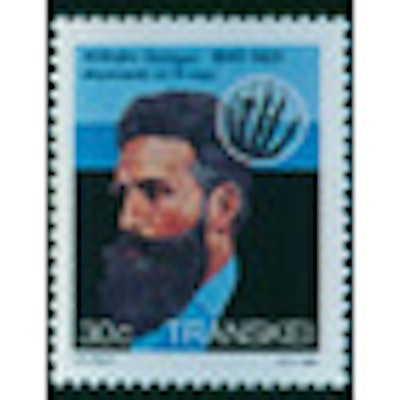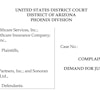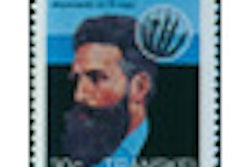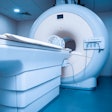
As radiology practices grew in community and academic hospitals starting in the 1930s and extending to the 1960s, most of the radiology teams had contracts in which the hospital billed total fees. That included both the technical expenses of hospital costs and its employees, and also a professional fee that the hospitals paid monthly to the radiology group.
That prevailing arrangement became a serious threat to the future of all radiology when the U.S. government developed a proposal to pay for hospital and some medical care for Social Security beneficiaries. The plan, later called Medicare, came into congressional action in 1961.
Before that time, President Harry Truman had encouraged Congress to consider a national health scheme, but nothing had happened. In 1960, the election of Democrats John Kennedy as president and Lyndon Johnson as vice president, along with a Democratic majority in Congress, led to the early 1961 introduction of proposals in the Senate and House calling for payment of hospital services for patients older than 65.
That bill was proposed and drafted by the American Hospital Association (AHA) and was opposed by the American Medical Association (AMA). Nothing happened in the first session of Congress. A somewhat modified bill, also proposed by the AHA, was introduced in 1963, and hearings were held that year.
In that version (HR 3920) was a provision stating that payment for the hospital treatment of the elderly would include the services of radiology, pathology, and anesthesiology, plus physical treatment.
In November, the day before President Kennedy was killed in a parade in Dallas, American College of Radiology (ACR) President Dr. David Carroll testified before a congressional hearing to assert that radiology would be severely harmed if the Medicare legislation only covered payment to hospitals. Shortly after those events, the newly installed President Johnson said he would push the hospital care bill, in addition to civil rights legislation and other promises made in 1960.
AMA opposition
A few months later, the ACR asked the AMA to encourage its lobbyists to repeal the radiology terms; the AMA responded that it would continue to oppose the entire Medicare proposal and it could not advocate a modification. If the ACR and the pathologists and anesthesiologists wanted to get out of hospital coverage, they should hire their own lobbyist and try to get Congress to amend the draft legislation to leave them out.
In the national election of 1964, President Johnson and the congressional Democrats were re-elected. The president said that he would push what was then called Medicare for action in 1965.
So, in January 1965, the ACR and the other specialty societies decided to hire lobbyists to fight their inclusion in the version of Medicare favored by hospitals. The ACR hired J.T. "Slick" Rutherford, a former Texas Democratic congressman, who had contacts with President Johnson, House of Representatives Speaker Sam Rayburn, and many other congressmen.
Rutherford explained that congressional action would originate with the House Committee on Ways and Means, which was led by Arkansas congressman Wilbur Mills, and also in the Senate Committee on Finance, led by Illinois Senator Paul Douglas, who was an admitted AHA supporter. But the legislation had to begin in the Ways and Means Committee, where Rep. Mills would draft the language.
With Rutherford's coaching, the ACR enlisted radiologists in congressional districts, drafted letters, and arranged visits to the members of the Ways and Means Committee from both parties. ACR leaders and senior staff made frequent trips to Washington, DC, and expanded their lobbying effort to all members of both houses of Congress.
A change in tactics
During the spring of 1965, the AMA changed its policy and proposed that in addition to hospital coverage, Congress should expand its legislation to cover services provided by all types of doctors. Such services would not be limited to patients occupying hospital beds, and doctors' fees would be paid for both ambulatory visits and medical service in hospitals.
The AMA's shift allowed the ACR to change its tactic. Instead of asking to be left out of the hospital version of Medicare, radiologists (and pathologists and anesthesiologists) wanted to be linked with other doctors.
Rep. Mills accepted the proposal for hospital coverage -- Part A of Medicare -- and physician coverage -- Part B of Medicare. His draft legislation was approved by his own Ways and Means Committee, and then by the full House of Representatives. The Senate accepted the expanded program. But when Sen. Douglas directed the Senate draft version, the radiologists, pathologists, and anesthesiologists had been added back into the hospital segment.
It is a standard procedure for Congress that when each of the bodies has passed bills with different language, there must be a conference committee in which representatives of both groups agree on a conclusion. There were six representatives and six senators in the committee. Rep. Mills told the ACR that it needed to renew its arguments to both houses of Congress, and to help him influence an agreement with his draft language for at least one of the six senators in the conference committee who likely would agree with Sen. Douglas.
By that time, the ACR learned from Slick Rutherford that President Johnson was pushing enactment of the pending Medicare language and supported the hospital version. However, the ACR soon found a helper: In Louisiana, a Shreveport radiologist, Dr. Wynton Carroll, was treating the mother of Sen. Russell Long. He was able to persuade Sen. Long to vote with Rep. Mills on the version the ACR favored.
So the compromise was concluded, and both the House and Senate accepted radiology into Part B of Medicare. On July 31, President Johnson signed the bill.
"Radiologists were granted the right to have their services to patients classified by the government as medical services for the beneficiaries of the new Medicare program," ran the lead sentence in the August 1965 issue of the ACR Bulletin.
Shortly after that action, ACR leaders went with Slick Rutherford to thank Rep. Mills for his support. He advised them that the ACR should change hospital contracts to reflect the new law, as well as contact Wilbur Cohen, the undersecretary of the Department of Health, who would establish a bureaucracy to design and implement the Medicare program by the summer of 1966. Dr. Wallace Buchanan, then the chairman of the ACR Board of Chancellors, promised Rep. Mills that the ACR would take his advice.
Cohen was invited to meet with the ACR board and he accepted the offer. With him, he brought some of the team chosen to organize Medicare. Buchanan promised that the ACR would make vigorous efforts to prepare radiologists to change their hospital contracts and to cooperate with the Medicare management team. Cohen accepted that offer, commenting that the ACR was the only medical organization to invite him and his team to work together.
The organization spent several years helping its member societies change their hospital contracts, obtain billing systems, and contract with helpers to collect their patient fees and to cope with other health insurance organizations that offered radiology coverage to other patients. The ACR's relationship with the Medicare organization was one of the reasons for its establishment of a Washington, DC, office in 1969, starting relationships that have continued effectively since that time.
Otha W. Linton, MSJ, retired in 1997 as the associate executive director of the American College of Radiology (ACR) after 35 years. He also served as executive director of Radiology Centennial in 1995. Mr. Linton holds a bachelor's degree in journalism from the University of Missouri and a Master of Science in journalism from the University of Wisconsin. His work has been published widely in the U.S. and abroad, and he is a regular contributor to several journals including Academic Radiology, the American Journal of Roentgenology, Radiology, and the Journal of the American College of Radiology. He joined the ACR staff in 1961 and had a key role in its growth. Over the years, his responsibilities with the ACR included government affairs, public relations, marketing, publishing, industrial liaison, and international relations. Just before his ACR retirement, he became the executive director of the International Society of Radiology and continues in that role. Also, since his retirement, he has written and published 14 histories of radiology societies and academic centers.
Sources
ACR Bulletin, 1965 editions.
Linton, OW. The economics of radiology practice. In: Gagliardi RA, McClennan BL. A History of the Radiological Sciences: Diagnosis. Reston, VA: Radiology Centennial Inc.; 1996.


















